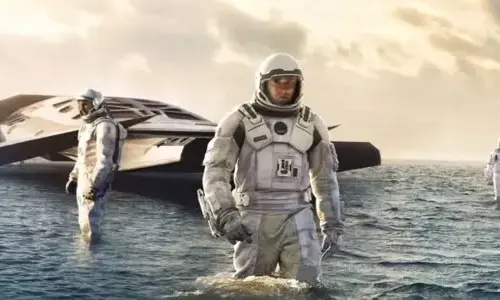15 interesting facts about Florida
Nicknamed the "Sunshine State," Florida was the 27th state to join the United States of America on March 3, 1845.
Florida has a total of 67 counties and its state capital is Tallahassee.
It has a population of 21.3 million, making it the third most populous state. Let's take a closer look at what really makes Florida the place it is today.
Florida is bordered by the states of Alabama and Georgia, with a total of 65,758 sq mi (170,312 km²) of land and water, making it the 22nd largest state.
With these quick facts, let's take a look at something a little more interesting, the facts that really make Florida the state it is today!
About two-thirds of Florida is a peninsula.

While Florida is bordered by the states of Alabama and Georgia, its largest border is with the Gulf of Mexico and the Atlantic Ocean.
Its borders with these waters are so large that it actually has the longest coastline of any contiguous US state (48 states on the continental United States).
Its coastline is a whopping 1,350 miles (2,170 km) long, and it has 4,510 islands that are 10 acres in size or larger!
Central Florida is the flashback capital of the United States.

Florida's nickname "Sunshine State" is a bit ironic, if you ask me.
Extreme weather is really common in Florida, especially in the central region.
Here it is more struck by lightning than anywhere else in the United States.
Florida also has more tornadoes per region than any other state.
Storm, you ask?
Florida was the first continental US state to be settled by Europeans.

In 1513, a conquered Spaniard named Juan Ponce de León arrived on the peninsula that is now known as Florida.
On arrival, he named the area La Florida.
While there are many theories about the origin of the name, there are two main contenders.
The area is named to appreciate the beautiful wild flowers found there, or it is named after the Spanish festival Pascua Florida (Festival of Flowers), held as they are.
There is only one place in the world where you can find crocodiles and crocodiles, that is in Florida.

In the Everglades National Park, the largest tropical wilderness in America, you can find such a spectacle.
While you can find crocodiles all over Florida, the only place you can see both them and alligators, a protected species, is here.
There are actually 38 different protected species in the Everglades National Park, including the West Indian manatee and the Florida leopard - one of the most endangered mammals remaining on the planet.
The population level in Florida has increased rapidly since the early 20th century.

Florida was a fairly quiet place in the 19th century, and it has a relative level of peace and tranquility compared to today.
However, all that changed after World War II, after a sharp increase in military spending and investment, made many people become states.
The state's population continued to grow at a rapid rate, especially after the 1950s, when Cuban exiles fled to Florida.
Spain exchanges Florida for Britain to control Havana, Cuba.

After their victory at the end of the Seven Years' War, Great Britain expanded its territory.
During the war, in 1762, Britain gained control of Havana from the Spanish, a blow to the Spanish Navy.
The UK further offended the Spaniards by suggesting they return to control Havana in exchange for Florida.
Spain accepted, and Great Britain ruled Florida until 1783, when they were defeated in the American Revolution.
The Walt Disney World Resort in Florida has 70,000 employees.

Known as the “Happiest Place on Earth,” Disney World in Florida also attracts the largest number of their monolithic chain.
According to Disney, Disney World in Florida employs 70,000 people - that's the US record for the largest number of people employed by a company in a single location!
However, it is not surprising that they need such a large staff.
Beachfront properties in Miami could be submerged underwater by 2100!

While seaside properties are all the rage, people generally want them up high, not underwater.
Miami is currently one of the cities at highest risk of land loss in the US due to rising sea levels.
Over the next 30 years, some 12,000 beach homes in Miami are at risk of serious flooding problems, a report in 2018 said.
The irony here is that prices still go up, not down!
Florida is one of the top vacation destinations in the world.

Florida has broken tourism records for many years now.
In 2015, the state welcomed more than 100 million tourists and in 2018 more than 126.1 million visitors.
However, it is not surprising that Florida is such a popular holiday destination, as the state has a lot to do.
However, if you don't want to catch the sun at the beach or spend the day at theme parks, don't worry: Florida has a lot more to do.
You can visit golf courses, state parks, or even the Kennedy Space Center, among many other things.
One of Florida's beaches is the shark-tooth capital of the world.

If you happen to find yourself in the Venice, Florida area, keep an eye on the ground.
About 10 million years ago, Florida was underwater, and this area was filled with sharks.
What remains today, however, are countless fossil shark teeth.
These days, wandering the beaches, sweeping the ground to find some teeth is a popular local pastime.
Florida is home to quirks, eccentricities and frankness.

Some people might say there is something in the water, but Florida seems to have more than just bizarre in general.
One just needs to go to Google "Florida man" to find an endless supply of hilarious articles purely about the horrors of the Floridians.
From a man drinking beer with a crocodile in his arms to a man threatening to kill his neighbor with kindness, they've got it all.
You said that second one doesn't sound strange, right?
Florida's space industry is booming!

In 1962, several NASA launch sites were developed on Cape Canaveral, on the east coast of Orlando.
Of course, the most famous here is the John F. Kennedy Space Center, which departs the Apollo missions, as well as the NASA shuttles.
Today, it's taking on a whole new life, with SpaceX hiring a launch pad from NASA.
The industry in Florida is so huge that it generates $ 4.1 billion annually!
Sunscreen may have been invented in Florida.

The details are a bit vague about who invented the first sunscreen.
What we do know is that the very first sunscreen sold in the US market was created by a Florida doctor named Benjamin Green.
Hailing from Miami, Green sought to create something to protect the US military during World War II.
Although his original product wasn't quite ideal, he continued to work on it to create the Coppertone sunscreen, which is still on sale to this day!
Florida used to be home to the 5th oldest tree in the world.

Located in Big Tree Park, Florida, this Cyprus bald tree used to be a whopping 125 feet (38m) tall!
It is not only the 5th oldest tree but also the tallest (and oldest) of its kind.
In 2012, a fire was reported to the local fire force, but by the time they attended it was too late - the historic tree collapsed.
Now you can only see the remains of the burned tree, about 6.1m high.
While it was initially believed to have caught fire due to a lightning strike, it was discovered that a woman accidentally caught fire while smoking.
There are more than 9,200 miles of cycling, hiking and horseback riding trails in Florida.

Yes, you heard right.
What they may not know is the staggering number of parks, such as the Everglades National Park.
A total of 37 state forests, 175 parks and 11 national parks to explore!
With so many different attractions, it is easy to understand why Florida is one of the top tourist destinations in the world.
Although it can sometimes have some pretty crazy weather, the rest of the time is bright and sunny.
So whether you're in warm year-round sunny skies, modern theme parks, walking trails in national parks or simply sunbathing on the beach, it makes sense.
 52ºc, New York
52ºc, New York







